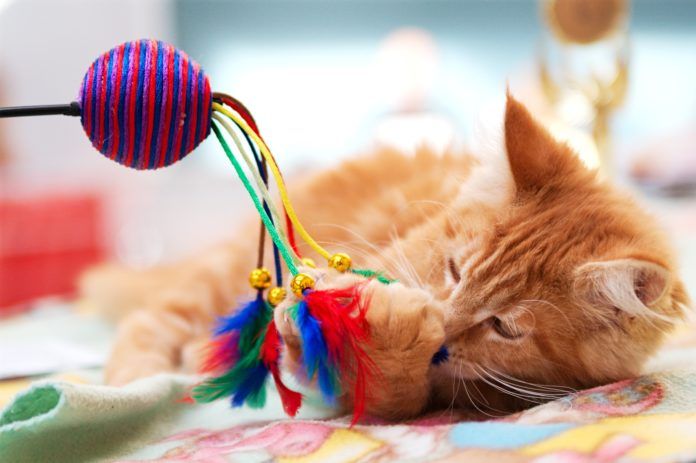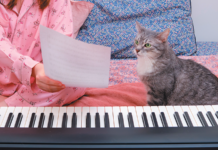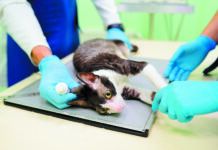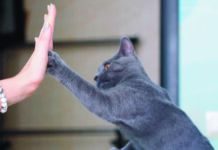Aprevalent myth about house cats is that felines are low-maintenance pets (or an even worse assumption: no-maintenance pets!). Perhaps their reputation as easy keepers is based on the idea that cats require far less attention than canines; but this misconception is actually far from the truth.
Certainly, there is a compelling difference in the nature and characteristics of these two species. To answer a dog’s nature calls, owners must walk them several times a day. However, just because cats instinctively use litter boxes, does this truly mean that taking care of a cat is a lot simpler and much less work for their owner?
In truth, cats do have individual needs that sometimes demand considerable attention. Cats require an abundance of stimulating activities to help maintain both their mental and physical condition. If these essential factors are neglected in their routine care, cats can be prone to boredom, depression and even the development of certain behavioral issues that can be detrimental to their health.
It certainly can be upsetting for owners to walk by their customarily sweet and gentle feline and have the cat unexpectedly lunge out at them with its razor-like claws, digging into their leg with needle-sharp teeth. Similarly, it is also distressing for the owners when their two tightly-bonded cats start fighting out of the blue, acting as if they want to kill each other.
Although there are a multitude of causes for these behaviors, there are many things that owners can do to help restore peace and harmony in their household.
Identifying stress in cats
“Stress is often a major underlying factor that causes problematic behavior,” explains Stephanie Borns-Weil, DVM, head of the Animal Behavior Clinic at the Cummings School of Veterinary Medicine. “However, the first thing that I strongly recommend is that when a cat suddenly starts any unusual behavior — before assuming that it is simply an emotional reaction — the owner should promptly make an appointment with their veterinarian for a thorough exam to rule out any underlying medical conditions. Once the cat has received a clean bill-of-health, then it is time to start looking for what may be causing the cat to be stressed.
“There are many types of stress to which cats are at risk, especially indoor-only cats,” says Dr. Borns-Weil. “Although cats may often peacefully share a home, major territorial issues can frequently arise in a multi-cat household.”
Cats that are anxious and stressed can start acting out in a variety of puzzling, destructive and aggressive ways. Doctors often prescribe hobbies for relaxation along with regular exercise to alleviate emotional stress and to maintain sound physical condition for their human patients. Consequently, it seems logical that consistent, structured interactive playtime — along with adhering to their cat’s daily routines — can also help mitigate a cat’s anxiety and stress.
“Indoor-only cats are prone to being more sedentary than indoor-outdoor felines. Without sufficient and appropriate stimulation, they can easily become bored. When cats don’t get their needs met, they can get depressed, agitated and become overly aggressive,” says Dr. Borns-Weil. “Even though there are greater safety risks for indoor-outdoor cats, these cats have their own territories to explore, and have expansive areas in which they can hunt. Indoor cats are severely deprived of this critical opportunity. As instinctive predators, they require an outlet for their hunting instinct. Without appropriate stimulation, indoor-only cats can easily start looking for negative ways to release their tension.”
Play benefits all cats
“As far as I am concerned, all play is therapeutic,” says Dr. Borns-Weil. “Depending on an adult cat’s age and physical condition, if the owner commits to between five to 15 minutes of interactive play twice a day with toys designed to stimulate the cat’s hunting instinct, it can make a huge difference in the cat’s life. I recommend that kittens get three periods of play a day for twenty minutes each session. These play sessions can make a huge difference in a cat’s behavior and mental balance. Furthermore, interactive play is a powerful way to build bonding between cats and their owners.”
Interactive toys attached to a wand, such as feathers or squiggly objects resembling snakes, mice and birds are highly attractive to cats and can become valuable resources for them. To interest the cat in play, Borns-Weil suggests, “Don’t just dangle the toy in front of the cat and expect it to react. Make it come alive! Really get into the game and show enthusiasm and excitement. Start the toy moving slowly at first and then gradually increase the pace. Get the cat fascinated by dragging it and hiding it behind a chair to make it appear to be real prey as much as possible. Carefully observe the cat’s reaction. Many cats will initiate play by crouching on the floor, and in preparation for the pounce will slowly raise their hind-end. To minimize their frustration, let the cat capture it now and then, then snatch it away.
“To sustain interest in the games, always rotate the toys. Since there is nothing solid to catch, I suggest that owners minimize the use of laser toys. It is likely to be more fun for the cat if you toss a treat that the cat can pounce on and eat, or a ball to chase and ‘kill,'” suggests Dr. Borns-Weil.
With a little imagination, it can be very easy for owners to create games that will initiate and mimic hunt/kill behavior. This will entice cats to stalk, pounce and leap into the air. According to Dr. Borns-Weil, “Aerobic exercise is invaluable for many cats since energetic play helps to get the kinks out, and it enhances physical fitness and emotional health.”
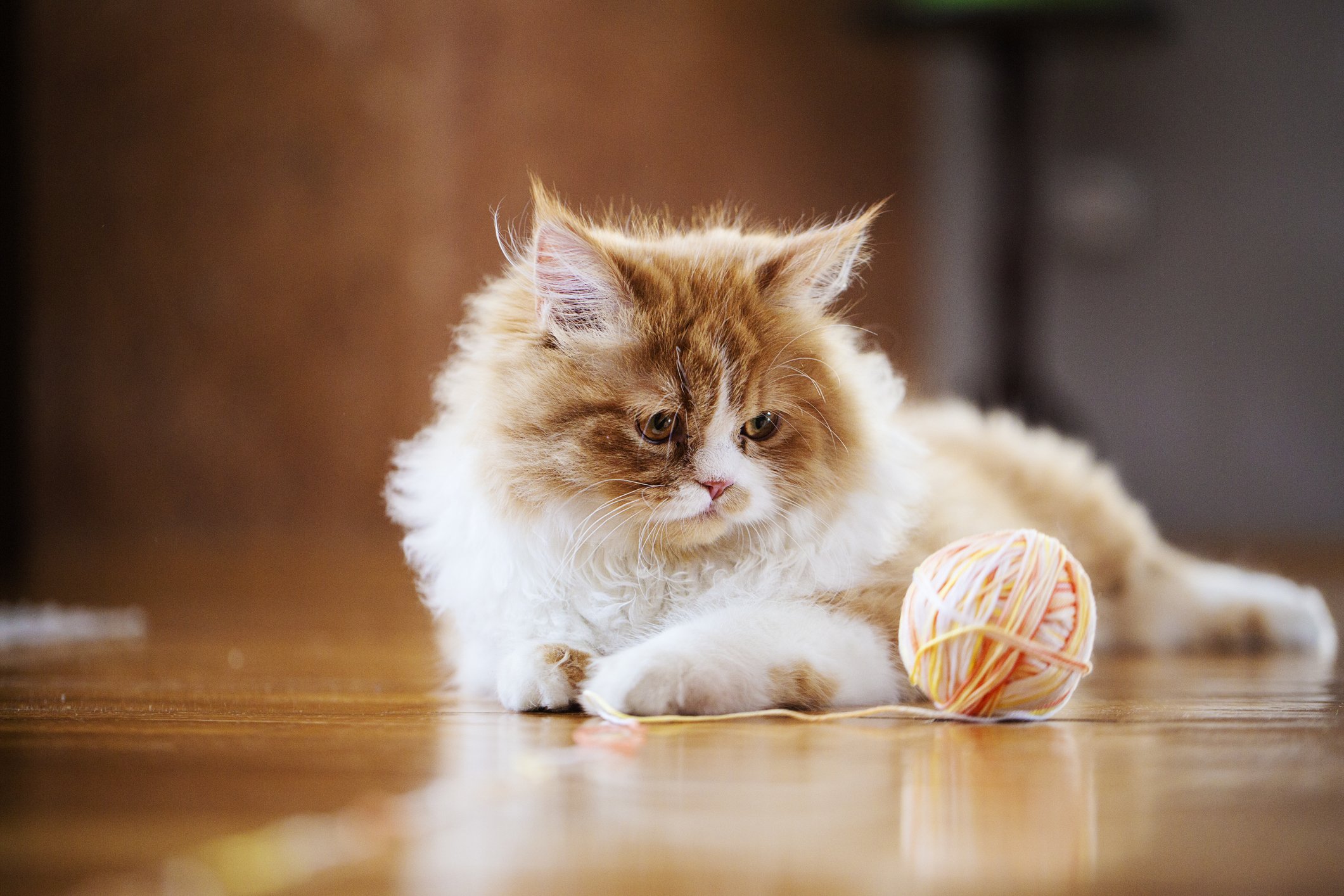

© milanvirijevic/Getty Images
Creating a schedule
Although regular play sessions will eventually help reduce feline stress, it may take some time for cats to get accustomed to their new routine. Arranging playtime at specific periods during the day or evening can be very helpful. Eventually, cats will look forward to their special occasion, and may even remind their owners that the time has arrived to start the games. Above all, it is important for owners to be persistent and easy-going during play periods and offer constant praise.
Even obese and older sedentary cats who no longer appear interested in fun and games can be inspired to play by using different toys. Although feather fliers may not be fun for them, some activity is far better than none. Dr. Borns-Weil suggests that an excellent way to tempt these cats to play is to get them to swipe at a peacock feather or to follow a paper ball on a string. Ping-pong balls are light enough to easily bat around, and owners can also add more interest in ping-pong balls by punching small holes in them and then filling them with little treats.
A wonderful way to spark an older cat’s play interest is to put very small pieces of food on paper plates and locate them in various areas around the house, which invites the cat to hunt for them. With patience and consistency, obese and older cats may ultimately look forward to their regular interactive playtime.
Food dispensers for some
To help owners ignite their cat’s hunting instinct, Dr. Borns-Weil suggests the use of adjustable food dispensers such as the ‘Pipolino’ and the ‘No Bowl.’ These special toys are an excellent way to prevent boredom by giving sedentary cats mental stimulation, gentle physical exercise and rewards. However, Dr. Borns-Weil recommends that it is wise to consult with your veterinarian before offering your obese cat any food games to make sure you’re not adding even more calories to her overall daily intake.
All interactive play for cats is therapeutic and healthy for them. It is a wholesome way for cats to expend their pent-up energy and to reduce boredom and aggression. Cats that receive consistent playtime are far less likely to attack their owners or other pets in the home because their predatory instincts have an appropriate outlet. This activity can be great bonding experience for the cat and the owner, as well. — Jo Singer

